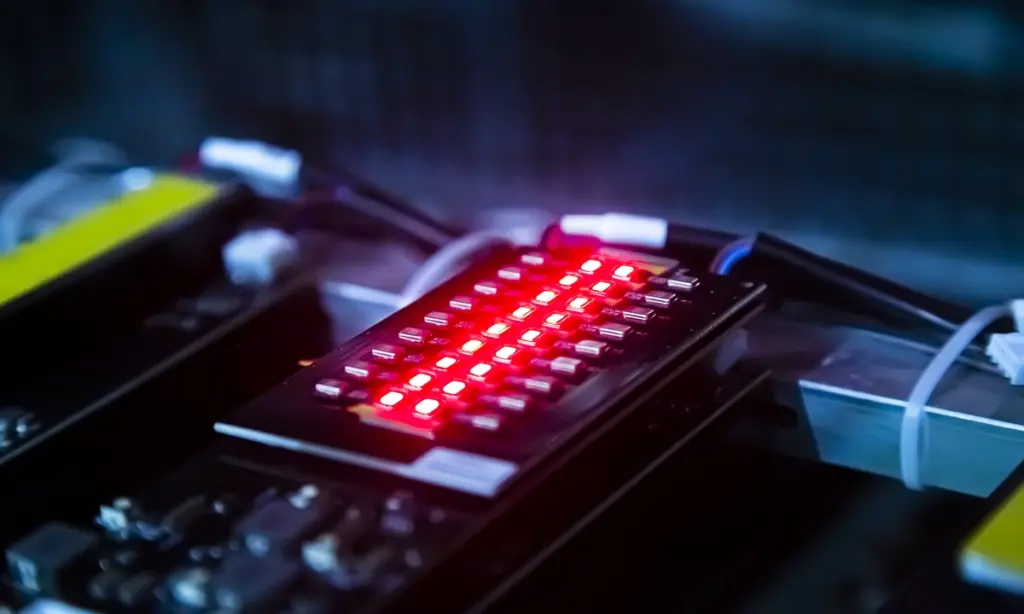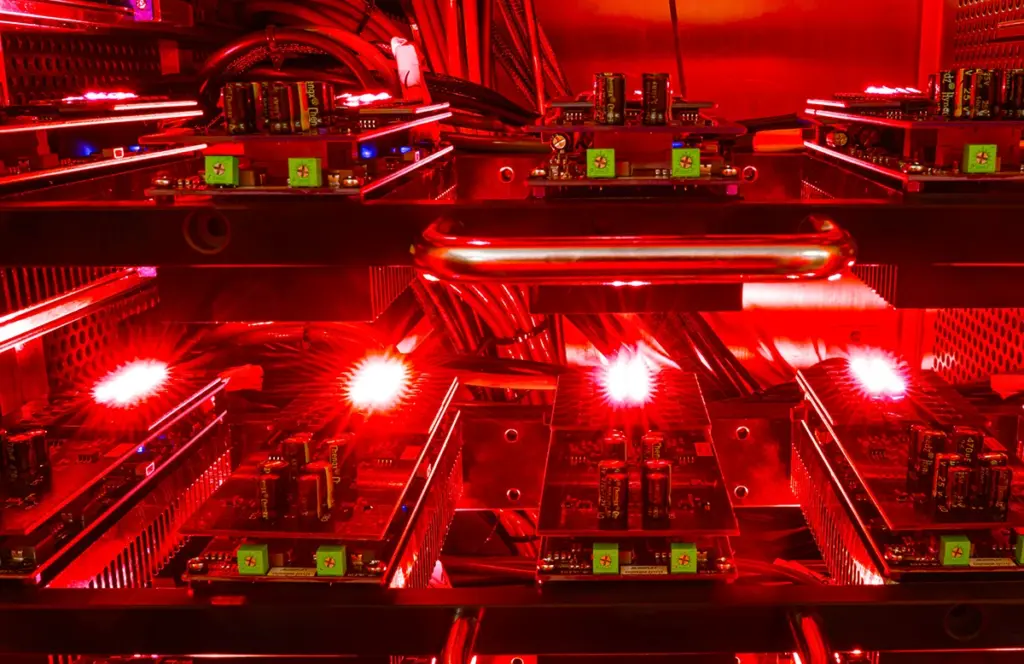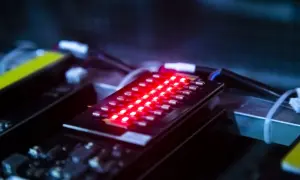Shanghai’s Jade Bird Display (JBD) claims to have achieved a 0.13-inch MicroLED red light chip with a brightness exceeding 1 million nits.


JBD used a specific technology related to a material called AlGaInP, which it believes is essential for producing bright red MicroLEDs. The company claims to have some proprietary improvements to the technology and has combined it with another method, chip passivation, to protect the chip and enhance its performance.
The primary goal of passivation is to protect a semiconductor surface from unwanted reactions with the environment, such as oxidation or contamination. This protection helps in maintaining the performance and stability of the semiconductor device over time. The passivation process typically involves depositing a thin layer of insulating material over the semiconductor surface. This material acts as a barrier, preventing the underlying semiconductor from coming into direct contact with the surrounding environment. Silicon nitride (Si3N4) and silicon dioxide (SiO2) are among the most commonly used materials for passivation in semiconductor devices.
The size of the red light-producing part on JBD’s chip is tiny, about 4um (micrometers). The actual light-emitting part is even smaller, less than 2um. Because they are so tiny, making them shine brightly without losing efficiency is a challenge. JBD is laying claim to its work in the improvements made with the AlGaInP technology to help overcome these challenges, resulting in brighter and more efficient MicroLEDs.
BD worked on improving how the MicroLED manages and directs the light it produces. The company enhanced the design to reduce unwanted reflections, ensuring more light is directed where it’s needed. JBD also improved the micro-lens structure. The result, claims the company, even with all its improvements and the super-bright red light output, means the MicroLED doesn’t use excessive power. It operates efficiently within its standard power limits, without needing to push it to extremes.
Historically, JBD has been known for touting red MicroLED brightness breakthroughs: in 2021 the company achieved 300,000 nits; in 2022 it was 500,000 nits, and only last February, the company claimed 750,000 nits. Now, it has broken through the 1 million nits barrier.
With these advancements, JBD says its Hummingbird X-cube color combination light engine opportunities have expanded dramatically. The engine has a compact size of 0.4cc, a weight of just 1g, and a power consumption as low as 200mW. JDB believes it a clear edge in consumer-grade AR full-color display solutions. Additionally, JBD has attained a MicroLED blue light brightness of 1 million nits and a green light brightness of 5 million nits. With the red light now also at 1 million nits, the Hummingbird light engine’s output brightness has risen from 3-4lm to over 5lm. This translates to an ultra-high lumen efficiency per unit volume of 12.5lm/cc.

